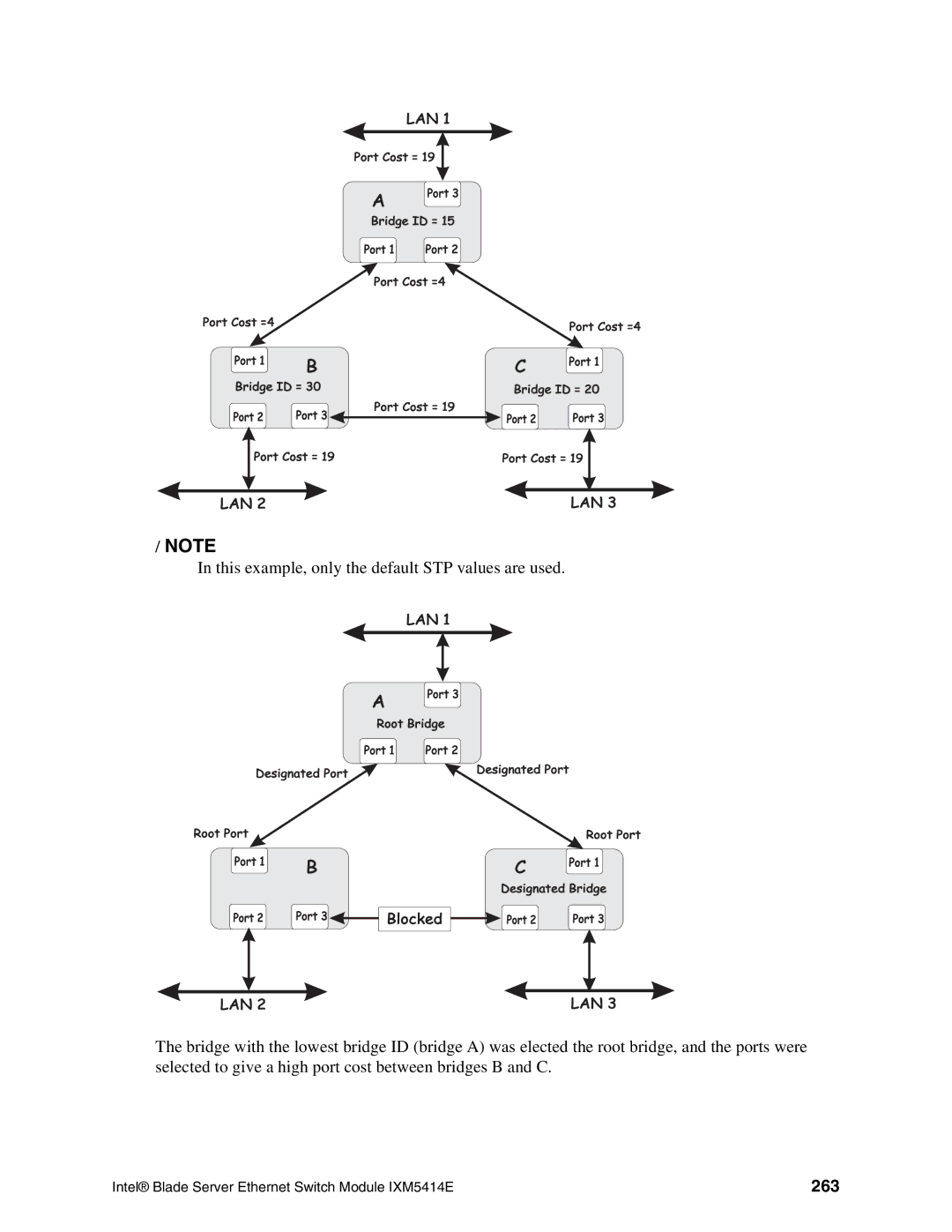
LAN 1
Port Cost = 19
A
Port 3
|
|
|
| Bridge ID = 15 |
|
| |||
|
|
|
| Port 1 | Port 2 |
|
| ||
|
|
|
| Port Cost =4 |
|
| |||
Port Cost =4 |
|
|
|
|
|
| Port Cost =4 | ||
|
|
|
|
|
|
|
| ||
Port 1 | B |
| C | Port 1 | |||||
|
|
|
|
| |||||
Bridge ID = 30 |
| Bridge ID = 20 | |||||||
Port 2 | Port 3 | Port Cost = 19 | Port 3 | ||||||
|
| Port 2 | |||||||
|
| ||||||||
| Port Cost = 19 |
|
|
| |||||
|
| Port Cost = 19 |
| ||||||
|
|
|
|
|
|
|
|
|
|
|
|
|
|
|
|
|
|
|
|
LAN 2 |
|
|
|
|
|
| LAN 3 | ||
/NOTE
In this example, only the default STP values are used.
LAN 1
A
Port 3
Root Bridge
Port 1 | Port 2 |
Designated Port | Designated Port |
|
Root Port
Port 1
Root Port
B | C | Port 1 |
|
Designated Bridge
Port 2 | Port 3 | Blocked | Port 2 | Port 3 |
LAN 2 | LAN 3 |
The bridge with the lowest bridge ID (bridge A) was elected the root bridge, and the ports were selected to give a high port cost between bridges B and C.
Intel® Blade Server Ethernet Switch Module IXM5414E | 263 |
